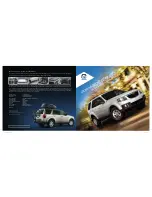
Refer to section on engine oil change regarding
recommended service intervals for oil changes.
Data memory
General information
Electronic control devices are installed in the ve‐
hicle. Electronic control units process data they
receive from vehicle sensors, self-generate or
exchange with each other. Some control units
are necessary for the vehicle to function safely or
provide assistance during driving, for instance
driver assistance systems. Furthermore, control
units facilitate comfort or infotainment functions.
Information about stored or exchanged data can
be requested from the manufacturer of the vehi‐
cle, in a separate booklet, for example.
Personal reference
Each vehicle is marked with a unique vehicle
identification number. Depending on the country,
the vehicle owner can be identified with the vehi‐
cle identification number, license plate and corre‐
sponding authorities. In addition, there are other
options to track data collected in the vehicle to
the driver or vehicle owner, for instance, via the
ConnectedDrive account that is used.
Operating data in the vehicle
Control units process data to operate the vehicle.
For example, this includes:
▷
Status messages for the vehicle and its indi‐
vidual components, e.g., wheel rotational
speed, wheel speed, deceleration, lateral ac‐
celeration, engaged safety belt indicator.
▷
Ambient conditions, e.g., temperature, rain
sensor signals.
The processed data is only processed in the ve‐
hicle itself and generally volatile. The data is not
stored beyond the operating period.
Electronic components, e.g. control units and ve‐
hicle keys, contain components for storing tech‐
nical information. Information about the vehicle
condition, component usage, maintenance rec‐
ommendations, events or faults can be stored
temporarily or permanently.
This information generally documents the state
of a component, a module, a system, or the sur‐
rounding area, for instance:
▷
Operating states of system components, for
instance, fill levels, tire pressure, battery sta‐
tus.
▷
Malfunctions and faults in important system
components, for instance lights and brakes.
▷
Responses by the vehicle to special driving
situations such as airbag deployment or en‐
gagement of the driving stability control sys‐
tems.
▷
Information on vehicle-damaging events.
The data is required to perform the control unit
functions. Furthermore, it also serves to detect
and correct malfunctions, and helps the vehicle
manufacturer to optimize vehicle functions.
The majority of this data is stored temporarily
and is only processed within the vehicle itself. In
some circumstances the vehicle may store some
data for an additional but limited period of time.
When servicing, for instance during repairs, serv‐
ice processes, warranty cases, and quality assur‐
ance measures, this technical information can be
read out from the vehicle together with the vehi‐
cle identification number.
A dealer’s service center or another qualified
service center or repair shop can read out the in‐
formation. The socket for OBD Onboard Diagno‐
sis required by law in the vehicle is used to read
out the data.
The data is collected, processed, and used by
the relevant organizations in the service network.
The data documents technical conditions of the
vehicle, which can be used to determine vehicle
maintenance status, and facilitate quality im‐
provement.
Fault and event memories in the vehicle can be
reset when a dealer’s service center or another
Seite 10
NOTES
Information
10
Online Edition for Part no. 01405A37822 - VI/21
Summary of Contents for X3 M
Page 2: ...Online Edition for Part no 01405A37822 VI 21...
Page 31: ...On the road QUICK REFERENCE 31 Online Edition for Part no 01405A37822 VI 21...
Page 317: ...Saving fuel DRIVING TIPS 317 Online Edition for Part no 01405A37822 VI 21...
Page 373: ...Vehicle Care MOBILITY 373 Online Edition for Part no 01405A37822 VI 21...
Page 377: ...Appendix REFERENCE 377 Online Edition for Part no 01405A37822 VI 21...
Page 394: ...BL5A3782200J 01405A37822 ue Online Edition for Part no 01405A37822 VI 21...











































